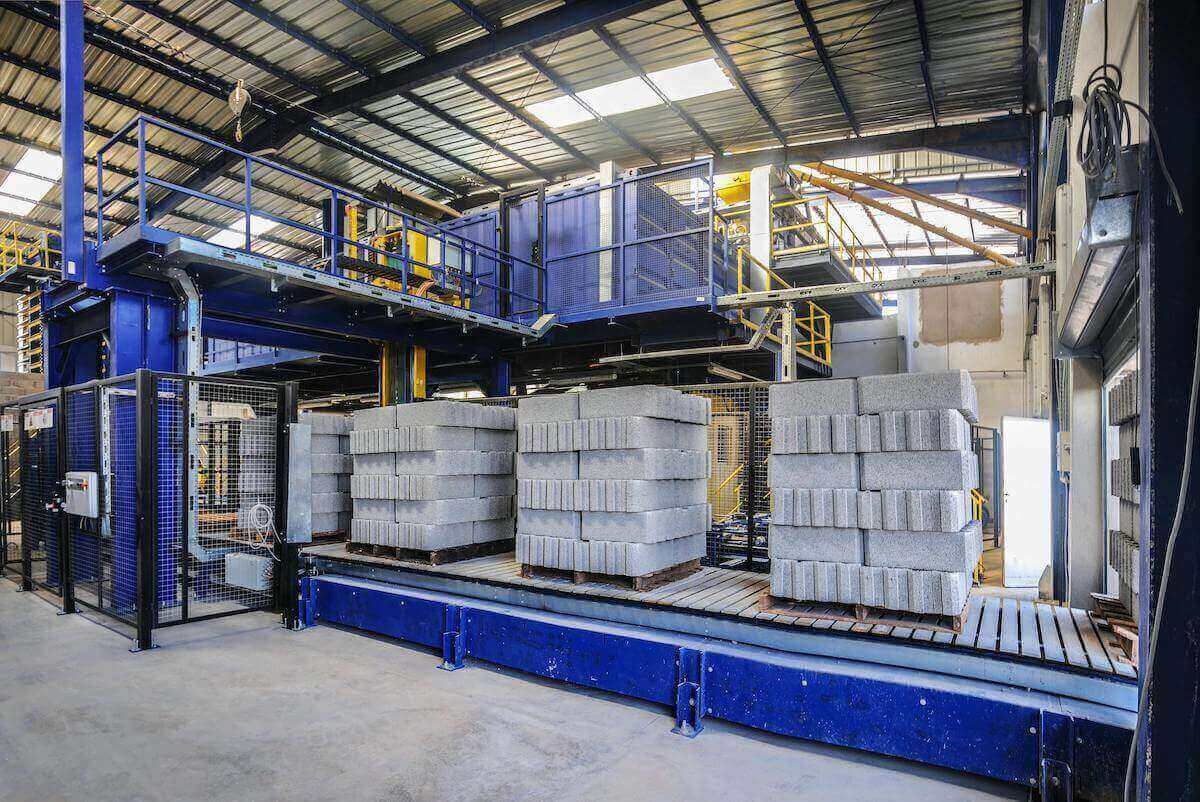Supply chains are buckling under the pressure of global uncertainties and disruptions. To survive these changes, businesses like yours must embrace supply chain automation.
Explore this guide to learn:
- What supply chain automation is.
- The top disruptors of global supply chains.
- Why you should automate your supply chain management processes.
- The types of supply chain automation.
Let’s dive in!
What is supply chain automation?
Supply chain automation uses advanced technology to simplify the supply chain. It automates tasks traditionally done by human workers through:
- Digital systems.
- Automated machinery.
- Supply chain management software.
An automated supply chain is crucial for businesses aiming to excel in the current market. Workflow automation:
- Increases operational efficiency.
- Reduces labor costs.
- Enhances your adaptability.
- Improves supply chain performance.
- Minimizes human intervention and errors.
Notable examples
Here are some examples of supply chain automation in action:
- Shop floors: Manufacturers harness robotic process automation and artificial intelligence (AI) to assemble components and conduct quality checks.
- Office administration: Software tools automate administrative tasks like billing and inventory management.
- Transportation and logistics: GPS technology facilitates real-time good tracking, while AI optimizes delivery routes. Autonomous vehicles and drones also offer further transport efficiencies.
- Customer service: Chatbots and AI-driven platforms automate interactions and provide instant responses to customer inquiries.
Top challenges and disruptors of supply chains
Staying ahead of the supply chain means understanding the obstacles that can throw you off course. Here are some challenges that supply chains must tackle:
- Material scarcity: Skyrocketing material prices and widespread shortages threaten your supply chain. This impacts your costs across the board, from consumer goods to raw materials.
- Increasing logistics costs: With rising fuel prices and a surge in shipping demand, transporting goods is getting pricier. This slows down your deliveries and pushes up global trade costs.
- Unpredictable consumer demand: As customer demands shift, supply chains must be more flexible and responsive to avoid under- or overstocking. These preferences determine your inventory management and product development.
- Global pandemics: The COVID-19 pandemic demonstrates how health crises disrupt global supply chains. As a result, you must ensure agile and resilient supply chain operations — and be ready for anything.
- Climate change: Climate change and extreme weather events pose significant risks to supply chains. These environmental risks cause physical damage to infrastructure and indirect market disruptions. So, ensuring a sustainable, robust supply chain is vital.
Benefits of automation in your supply chain
Automating your supply chain offers numerous advantages for your efficiency and accuracy. Below are the top benefits of automated supply chain processes.
Save time on manual and repetitive tasks
Automation simplifies workflows by managing your time-consuming, manual tasks. This speeds up operations and frees up your resources for value-added activities.
Increase employee satisfaction
Automating mundane tasks reduces workloads and minimizes burnout, which leads to higher job satisfaction. With automation, your employees can dedicate more time to engaging and meaningful work. So, you get more from your team while you foster a more constructive and attractive work environment.
Improve customer experience
Automation ensures faster and more reliable:
- Order processing.
- Shipping times.
- Inventory management.
This results in timely deliveries and accurate order fulfillment, which improves your customer relationship management.
Increase visibility in operations
With real-time data and predictive analytics, automation provides a clear view of the entire supply chain. This real-time visibility helps you:
- Make informed decisions.
- Predict potential supply chain disruptions.
- Optimize operations for better efficiency.
Maximize accuracy
Automated systems minimize human error by precisely executing tasks, from inventory management to order processing. This accuracy is crucial to maintain quality control and ensure operational excellence.
Limitations of automation in supply chain
Embracing automation in your supply chain also comes with its set of hurdles:
- High initial investment: Automation technology requires a big initial spend. Companies must invest in new hardware and software, which is not always possible for small business budgets.
- Implementation complexity: Implementing automation means tackling complex systems and long implementation times. Navigating these complexities often requires external supply chain expertise, which adds to your overall cost.
- Reduced flexibility: Automated systems focus on efficiency and consistency. A standardized automated workflow is powerful but lacks flexibility. As a result, adapting or customizing these processes may be more trouble than it’s worth.
- Technology reliance: Automation exposes supply chains to the risk of technology failures, like system outages and software problems. The more you’ve automated, the more detrimental these issues become. To safeguard operations, you need robust backup plans and security measures.
- Employment concerns: Automation leads to concerns about job displacement. While automation frees up employee time, it also means some roles can become redundant. Make sure to reassess your team structure and address any internal concerns.
Types of supply chain automation
Now that you know the limitations and benefits of automation, it’s time to explore the range of technologies available for your supply chain.
Data connectivity
Data connectivity refers to the seamless integration and exchange of data across your supply chain. It ensures that information flows freely between your systems and devices.
Data connectivity is possible with:
- Cloud computing.
- Electronic data interchange (EDI).
- Application programming interfaces (APIs).
As a result, you improve your:
- Demand forecasting.
- Visibility into inventory levels.
- Decision-making.
Through data connectivity, supply chain leaders empower real-time insights and efficiency across their networks.
Warehouse automation
Warehouse automation uses robots and automated systems to handle goods more efficiently. It incorporates technologies such as:
- Smart conveyors.
- Robotic picking systems.
- Automated storage and retrieval systems (ASRS).
- Warehouse management systems (WMS).
Warehouse automation helps you:
- Lower labor costs.
- Speed up processing times.
- Reduce errors and worker injuries.
Internet of things (IoT)
The internet of things (IoT) connects physical objects to the internet for real-time tracking and data collection. Examples of IoT devices include:
- GPS trackers.
- Temperature monitors.
- Smart sensors.
- Security cameras.
Supply chain managers use IoT devices to:
- Reduce paperwork.
- Manage inventory levels.
- Monitor environmental conditions.
- Track vehicle locations.
Overall, leveraging the internet of things effectively provides supply chain visibility and empowers proactive business management.
Transport automation
Transport automation simplifies logistics with advanced tracking tools and self-driving vehicles.
These autonomous vehicles reduce delivery times and operational costs, especially in last-mile delivery. Note that full-scale commercial use for automated guided vehicles (AGVs) is still in development.
Also, real-time GPS and radio frequency identification (RFID) data enhance the efficiency of your transportation management.
In a nutshell, integrating transport automation technology boosts your supply chain’s:
- Efficiency.
- Reliability.
- Scalability.
Wrap-up: What is supply chain automation?
Supply chain automation harnesses digital technologies to simplify and refine your operations. As a result, you optimize your workflows and align your supply chain with future industry standards.
While you may encounter hurdles like high upfront costs, automation offers substantial long-term benefits.
If you’re a QuickBooks or Xero user, consider automating your workflows with an integration like Method.
To get time back in your workday and optimize your logistics process, look no further than supply chain automation.
Automation in supply chain FAQs
Is the supply chain being automated?
Yes, supply chains are being automated by many businesses to simplify operations and improve efficiency.
Why is automation needed in the supply chain?
Automation is needed to address common supply chain challenges, such as:
- Manual errors.
- Operational inefficiencies.
- Complex logistics processes.
- A demand for real-time, advanced analytics.
What are the benefits of automation in the supply chain?
Benefits of automation in the supply chain include:
- Improved customer experience.
- Efficient supply chain functions.
- Increased employee satisfaction.
- More time for value-added activities.
- Reduced costs, including labor and operational expenses.
Uncover how to perfect your manufacturing automation in six steps!
Image credit: Moussa Idrissi via Pexels


